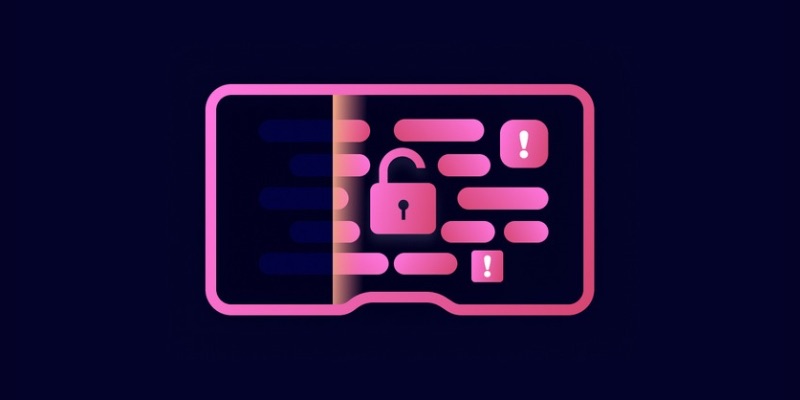What is the Difference Between Data Backup and Recovery Software?
June 27, 2023, 6 min read
Data is a critical asset for businesses of all sizes. From customer information to financial records, businesses rely on data to operate efficiently and effectively. However, with data breaches, cyberattacks, and natural disasters on the rise, the risk of data loss has never been higher. This is where backup and recovery software comes into play. While the terms “backup” and “recovery” are often used interchangeably, they serve different purposes and require different solutions. In this blog post, we’ll delve into data backup and recovery basics, their importance for businesses, key differences, and available solutions. Gain a comprehensive understanding of backup and recovery software’s crucial role in safeguarding data and ensuring business continuity.
Data backup and recovery refer to the process of safeguarding data against loss or corruption and restoring it in case of a disaster. Various reasons, including hardware failure, software corruption, theft, or natural disasters such as floods and fires, can cause data loss. The purpose is to ensure that data remains accessible and protected in the event of any of these situations.
Data backup refers to the process of creating copies of data and storing them in a separate location, preferably offsite. There are different backup strategies that organizations can employ, including full backups, incremental backups, and differential backups. Full backups involve copying all data from a source system to a target location, while incremental backups only copy data that has changed since the last backup. Differential backups, on the other hand, copy all data that has changed since the last full backup.
Data recovery, on the other hand, is the process of retrieving data that has been lost or damaged. Recovery can be partial or complete, depending on the type and extent of the damage. Data recovery software typically uses techniques such as data replication, data migration, and data restoration to restore lost or corrupted data.
The Importance of Backup and Recovery for Businesses
Data is one of the most valuable assets that any organization possesses. From customer information to financial records and employee data, businesses rely on data to make critical decisions and operate efficiently. Therefore, the loss or corruption of data can have severe consequences for any organization.
The consequences of data loss can include financial losses, legal liabilities, loss of customer trust, and damage to reputation. For example, if a business loses customer data, it may face legal action and incur reputational damage. In addition, data loss can disrupt business operations and lead to downtime, which can impact revenue and productivity.
Therefore, backup and recovery software is crucial for any business that wants to protect its data and minimize the risk of data loss. By implementing a robust backup and recovery solution, organizations can ensure that their data remains accessible and protected in the event of any unforeseen circumstances.
How do Data Backup and Recovery Differ?
While data backup and recovery are closely related, they serve different purposes. Data backup is all about creating copies of data and storing them in a secure location. Backup takes a proactive approach to prevent data loss and guarantee data accessibility in case of a disaster. Typically, backup solutions automate and schedule regular backups to ensure data is consistently backed up.
On the other hand, data recovery responds reactively to restore lost or corrupted data. Recovery solutions typically utilize specialized software tools designed to retrieve data from backups or restore it from other sources. Additionally, recovery solutions may involve data replication and migration to expedite data restoration. Therefore, backup and recovery represent two sides of the same coin. Backup guarantees data protection and accessibility, while recovery guarantees the ability to restore data in case of a disaster.
Different Types of Backup and Recovery Solutions
There are several backup and recovery solutions available in the market today, each with its unique strengths and weaknesses. Some of the common types of backup and recovery solutions include:
Many organizations still use tape backup, one of the oldest backup solutions. Tape backup entails copying data onto magnetic tape and storing it offsite. While tape backup is a reliable and cost-effective solution, it is also slow and requires manual intervention.
Disk backup is a newer backup solution that involves copying data onto disk-based storage. Its solutions are faster and more reliable than tape backup and can be automated to ensure that backups are performed regularly. Disk backup solutions are also scalable, making them suitable for businesses of all sizes.
Cloud backup is a backup solution that involves copying data to a remote cloud-based server. Cloud backup solutions offer several advantages, including ease of use, scalability, and cost-effectiveness. With cloud backup, data can be accessed from anywhere, making it an ideal solution for businesses with remote employees or multiple locations.
- Continuous Data Protection (CDP)
Continuous Data Protection (CDP) is a backup solution that captures every change made to data in real time. CDP solutions continuously back up data, ensuring that there is always a copy of the most recent data available. CDP solutions are ideal for businesses that require near-instantaneous recovery times.
- Disaster Recovery as a Service (DRaaS)
Disaster Recovery as a Service (DRaaS) is a backup and recovery solution that involves replicating data to a cloud-based server. In the event of a disaster, the data can be quickly restored from the cloud-based server, minimizing downtime and ensuring business continuity. DRaaS solutions offer several advantages, including fast recovery times, scalability, and cost-effectiveness.
Choosing the Right Backup and Recovery Solution
Businesses must also consider their regulatory compliance requirements when choosing a backup and recovery solution. Some industries, such as healthcare and finance, have strict data protection regulations that must be adhered to.
Conclusion
Backup and recovery software is essential for any business that wants to protect its data and minimize the risk of data loss. While backup and recovery are closely related, they serve different purposes and require different solutions. Businesses must carefully evaluate their backup and recovery requirements and choose a solution that meets their needs and budget. By implementing a robust backup and recovery solution, businesses can ensure that their data remains accessible and protected, even in the event of a disaster.
Moreover, businesses must also regularly test their backup and recovery solutions to ensure that they work correctly. Regular testing helps identify any issues or gaps in the backup and recovery process, allowing businesses to address them before a disaster occurs.
It is also crucial for businesses to have a solid disaster recovery plan in place. A disaster recovery plan specifies the steps individuals must take in the event of a disaster, including assigning responsibilities for plan implementation, defining the data recovery process, and determining how the business will resume operations. A well-designed disaster recovery plan can help minimize downtime and ensure business continuity.
In addition to backup and recovery software, businesses can also take other steps to protect their data, such as implementing data encryption, using firewalls and antivirus software, and educating employees on data security best practices.
In summary, data backup and recovery software plays a critical role in protecting business data and ensuring business continuity. Backup and recovery are closely related but serve different purposes and require different solutions. Businesses must carefully evaluate their backup and recovery requirements and choose a solution that meets their needs and budget. They must also regularly test their backup and recovery solutions and have a solid disaster recovery plan in place. By implementing a comprehensive backup and recovery strategy, businesses can minimize the risk of data loss and ensure that their data remains accessible and protected, even in the event of a disaster.




























